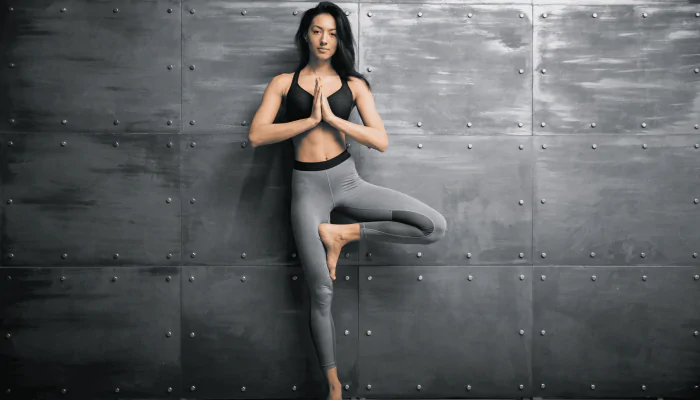What is the Standing Meditation (Zhan Zhuang) Pose?
Standing Meditation, or Zhan Zhuang, is one of the most underrated yet powerful meditation practices. Instead of sitting cross-legged like in Sukhasana or Lotus, here you simply stand still—feet grounded, body relaxed, and mind focused. The word “Zhan Zhuang” literally means “standing like a tree.” And that’s the whole idea—you stand tall, rooted, calm, and let the energy flow through you. It may sound simple, but if you’ve ever tried standing completely still for more than a few minutes, you know it takes real patience, awareness, and strength.
How to perform the Standing Meditation Pose?
Let’s break it down step by step so you can try it right away:
- Start with your feet – Place them shoulder-width apart, toes pointing slightly forward or outward, whatever feels natural.
- Soften your knees – Don’t lock them. Keep a gentle bend so your body feels springy, not stiff.
- Relax your arms – You can let them hang by your sides or raise them slightly in front of your chest (as if you’re holding a ball).
- Align your spine – Imagine a string pulling the crown of your head upward. Keep your chin slightly tucked.
- Breathe naturally – Slow, deep, calm breaths. Focus on the rise and fall of your belly.
- Stay present – If your mind wanders, gently bring it back to your breath and posture.
Start with just 3–5 minutes, then gradually increase to 10–20 minutes as your body adapts.
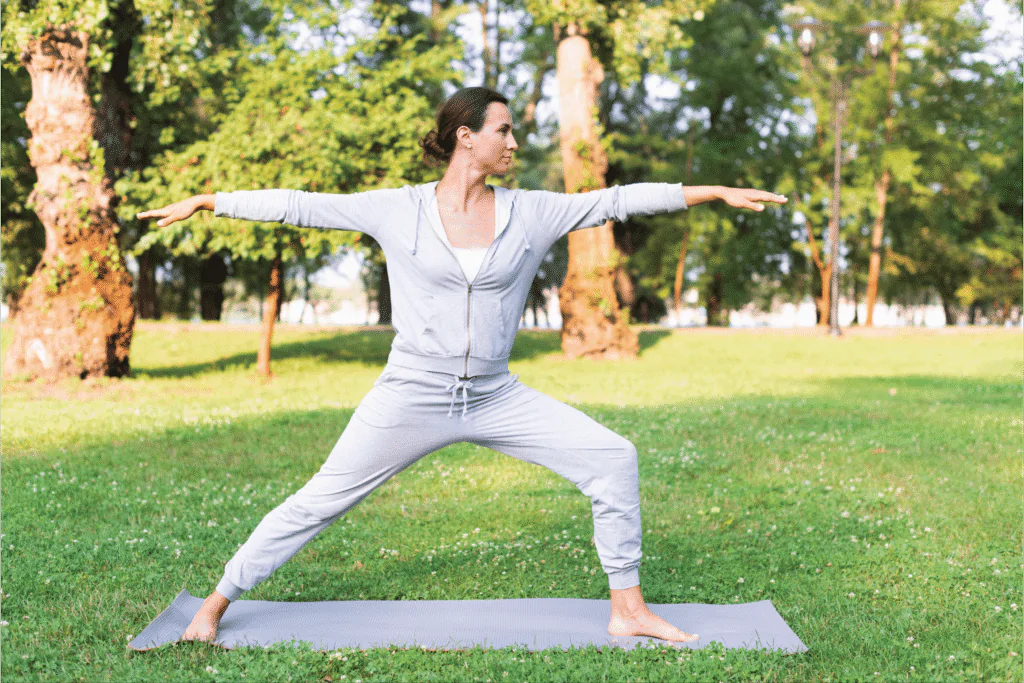
What are the Mental and Physical Benefits of Standing Meditation?
You might wonder—what’s the point of just standing there? But the benefits are surprisingly deep:
- Mental clarity: The stillness clears mental chatter and sharpens focus.
- Stress relief: Calming the nervous system lowers stress and anxiety.
- Stronger posture: It naturally aligns the spine and strengthens the legs.
- Energy flow: In Chinese tradition, Zhan Zhuang balances “Qi” (life energy) in the body.
- Patience & endurance: Learning to be comfortable in stillness builds inner resilience.
It’s like a workout for both your mind and body—without moving an inch.
What are the Variations of Standing Meditation?
Standing Meditation has a few simple but powerful variations you can explore:
Arms by Your Side
This is the most beginner-friendly variation. Just stand tall, relax your shoulders, and let your arms hang naturally. It’s perfect if you’re new to the practice, and it helps you focus purely on grounding and breathing.
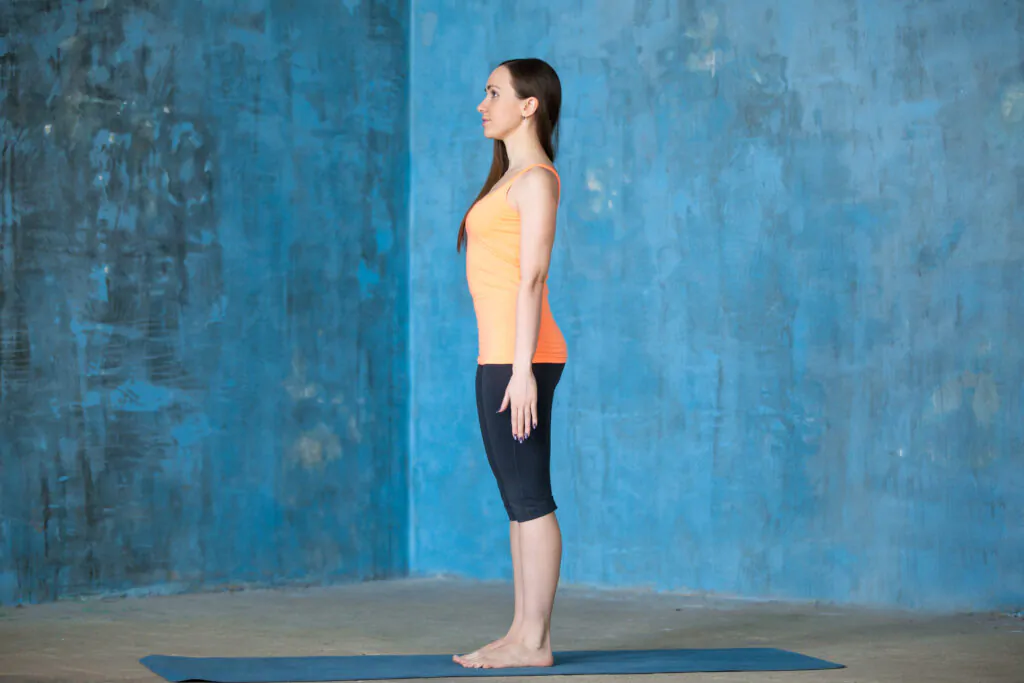
Holding the Ball
In this variation, you lift your arms slightly in front of your chest as if you’re gently holding a ball. This opens your chest and strengthens your shoulders, while also encouraging deeper breathing.
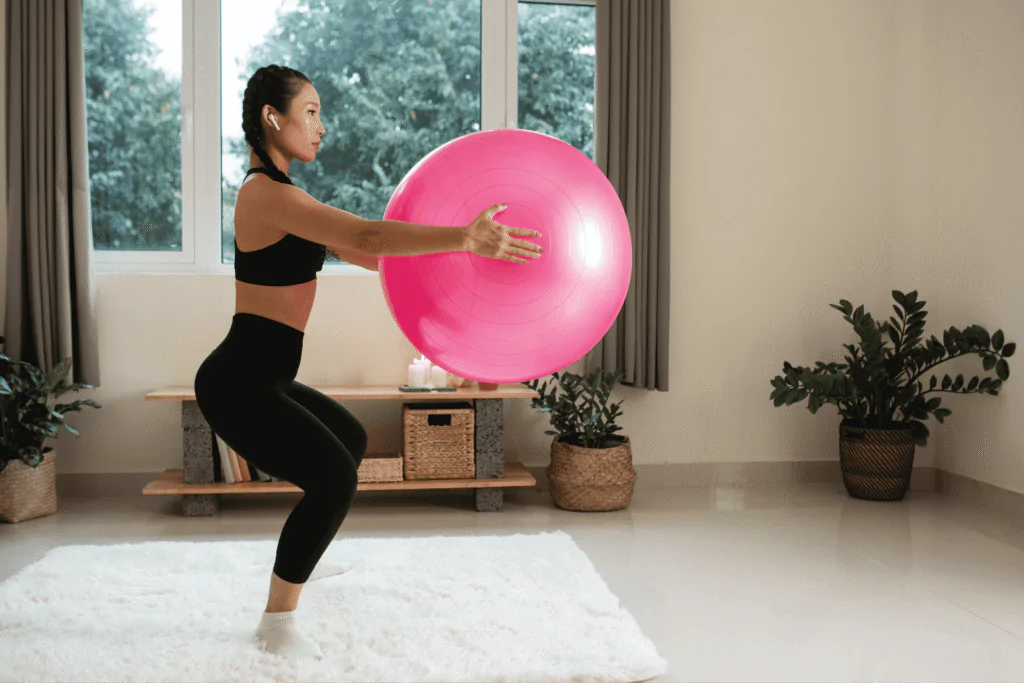
Tree Hugging Pose
Imagine wrapping your arms around a big tree. Your elbows are slightly bent, fingers relaxed, and palms facing your chest. This variation is great for building upper-body endurance and deepening the sense of connection to nature.
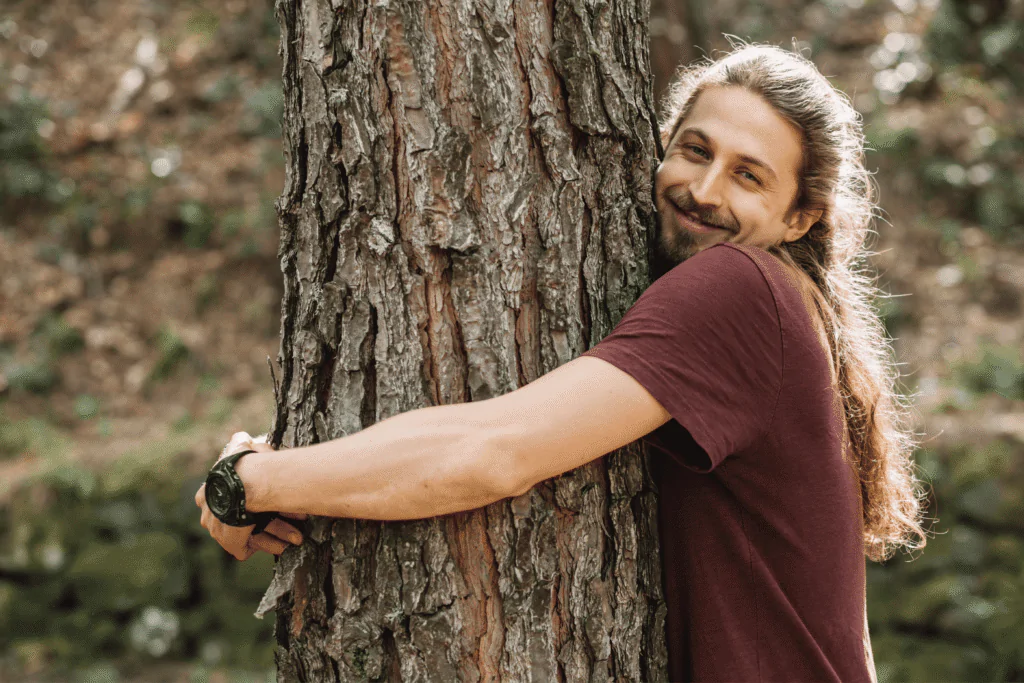
What are the Preparatory Poses of Standing Meditation?
You don’t just jump into stillness. A few simple stretches can prepare your body:
- Neck Rolls – Loosen up any tension in your neck.
- Shoulder Shrugs – Relax your shoulders so they don’t stiffen while standing.
- Gentle Squats – Warm up your knees and thighs for better endurance.
- Mountain Pose (Tadasana) – A yoga posture that aligns perfectly with Zhan Zhuang.
Think of these as “switching gears” before you step into stillness.
What are the Precautions for Standing Meditation?
While Standing Meditation looks simple, it still needs some care:
- If you have knee or back pain, start slow and keep your knees softly bent.
- Don’t push yourself to stand longer than your body allows—build endurance gradually.
- If you feel dizzy or heavy in your chest, pause, sit down, and breathe deeply.
- Beginners may feel leg shaking or numbness. That’s normal at first—take breaks.
- Always listen to your body. Standing still should feel calm, not like a punishment.
Finding the Best Meditation Pose for You
Here’s the truth: there’s no “one-size-fits-all” meditation pose. Some people love the deep grounding of Lotus Pose, while others prefer the softness of Sukhasana (Easy Pose). And then there are those who find their centre by simply standing like a tree in Zhan Zhuang.
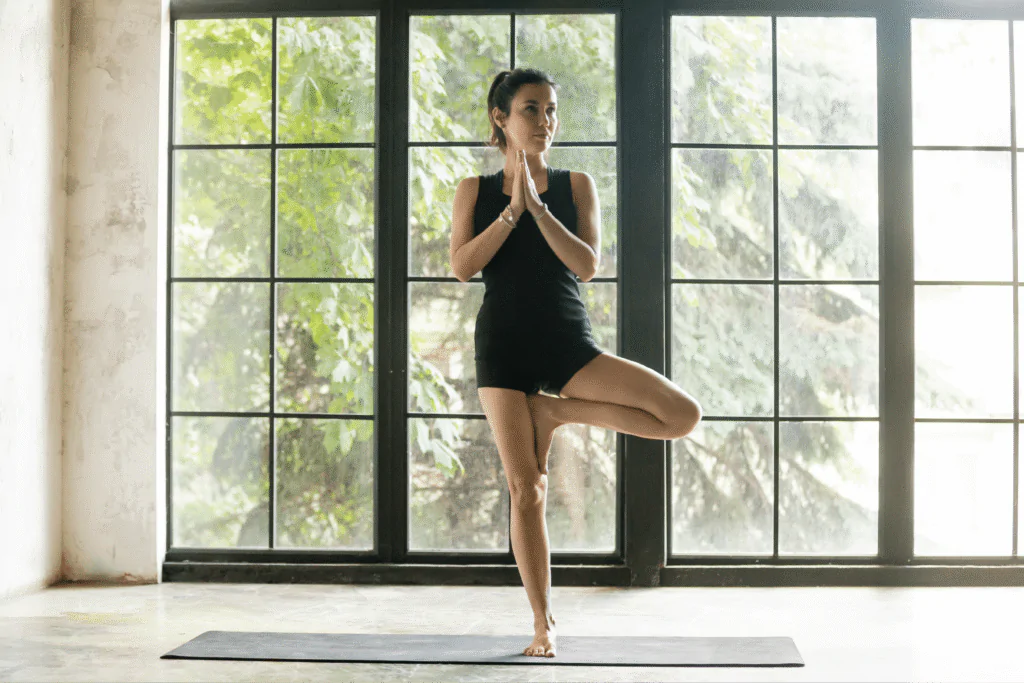
The best meditation posture is the one that allows you to stay present without fighting your body. If your legs go numb in cross-legged poses, try standing. If standing feels tiring, sit on a cushion or chair. The goal is not to look like a perfect yogi—it’s to create a posture where your body feels steady and your mind feels free.
At the end of the day, meditation is about connection—between breath, body, and awareness. So experiment, mix things up, and notice how each pose shapes your experience. That’s how you’ll discover the meditation practice that truly fits you.
Conclusion
Standing Meditation (Zhan Zhuang) might look simple from the outside—you’re just standing there, right? But once you try it, you realize how powerful it can be. It’s like plugging yourself into the earth and letting all the extra noise melt away. Your legs get stronger, your breathing deeper, and your mind clearer with every session. If sitting cross-legged feels uncomfortable for you, this practice can be a beautiful alternative. Sometimes, the most profound changes come from the simplest things—and just standing still is one of them.

